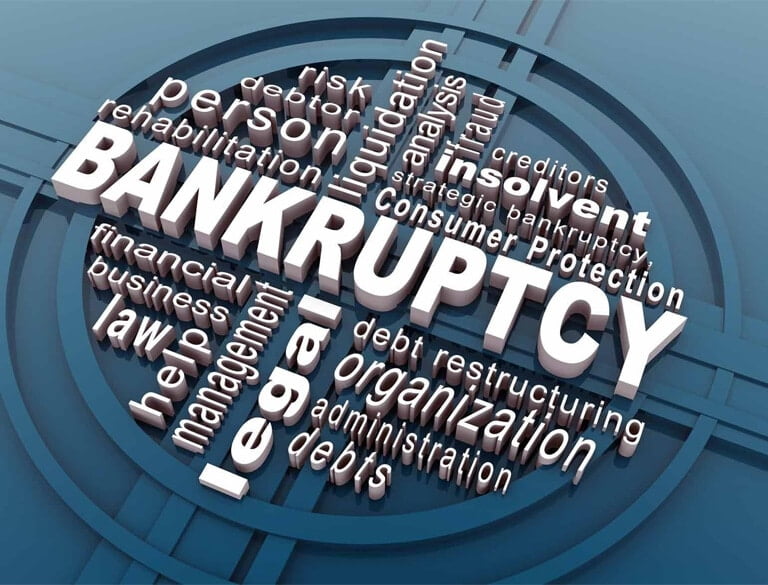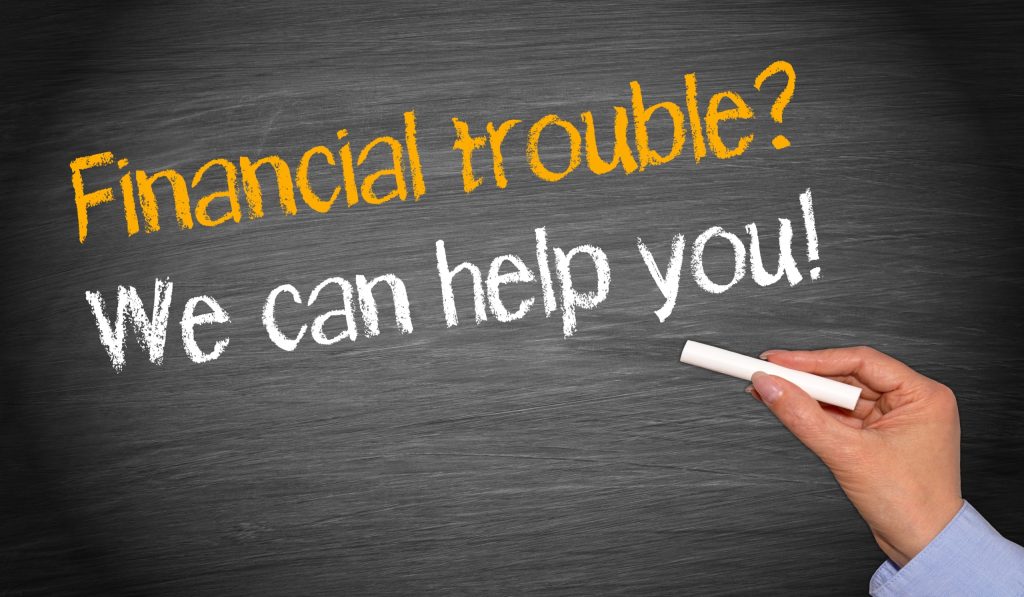Introduction
Bankruptcy in Canada is a legal process that provides individuals and businesses with a way to manage their debt and get a fresh start. It is a process that is regulated by the federal government and administered by Licensed Insolvency Trustees (LITs). Bankruptcy is a serious financial decision and should not be taken lightly. It is important to understand the consequences of bankruptcy and the options available to you before making a decision. This article will provide an overview of bankruptcy in Canada, including the different types of bankruptcy, the consequences of bankruptcy, and the options available to those considering bankruptcy.
The Different Types of Bankruptcy in Canada
Bankruptcy is a legal process that allows individuals and businesses to restructure or eliminate their debts. In Canada, there are two types of bankruptcy: consumer bankruptcy and business bankruptcy.
Consumer Bankruptcy
Consumer bankruptcy is a legal process that allows individuals to eliminate their unsecured debts. This type of bankruptcy is available to individuals who are unable to pay their debts and have no other way to resolve their financial situation. To qualify for consumer bankruptcy, individuals must meet certain criteria, such as having a minimum amount of debt and a minimum income.
Once an individual has filed for consumer bankruptcy, their creditors are legally prohibited from taking any action to collect the debt. The individual’s assets may be sold to pay off the debt, but any remaining debt is eliminated. The individual is then discharged from bankruptcy after a period of nine months.
Business Bankruptcy
Business bankruptcy is a legal process that allows businesses to restructure or eliminate their debts. This type of bankruptcy is available to businesses that are unable to pay their debts and have no other way to resolve their financial situation. To qualify for business bankruptcy, businesses must meet certain criteria, such as having a minimum amount of debt and a minimum income.
Once a business has filed for business bankruptcy, their creditors are legally prohibited from taking any action to collect the debt. The business’s assets may be sold to pay off the debt, but any remaining debt is eliminated. The business is then discharged from bankruptcy after a period of 21 months.
In conclusion, there are two types of bankruptcy available in Canada: consumer bankruptcy and business bankruptcy. Each type of bankruptcy has its own criteria and requirements, and the process for each type is slightly different. It is important to understand the differences between the two types of bankruptcy before making a decision about which type is best for your situation.
How to Avoid Bankruptcy in Canada
Bankruptcy is a serious financial situation that can have long-term consequences. Fortunately, there are steps you can take to avoid bankruptcy in Canada.
1. Create a budget: The first step to avoiding bankruptcy is to create a budget. This will help you understand your income and expenses and identify areas where you can cut back. Make sure to include all of your expenses, including rent, utilities, groceries, and entertainment.
2. Reduce your debt: Once you have a budget in place, you can start to reduce your debt. Start by paying off the debts with the highest interest rates first. You can also consider consolidating your debt into one loan with a lower interest rate.
3. Increase your income: If you’re struggling to make ends meet, consider ways to increase your income. This could include taking on a second job, selling items you no longer need, or finding ways to make money online.
4. Talk to a credit counsellor: If you’re still struggling to make ends meet, consider talking to a credit counsellor. They can help you create a plan to pay off your debt and provide advice on how to manage your finances.
5. Consider filing a consumer proposal: If you’re unable to pay off your debt, you may want to consider filing a consumer proposal. This is an agreement between you and your creditors that allows you to pay off your debt over a period of time.
By following these steps, you can avoid bankruptcy in Canada and get back on track financially. It’s important to remember that it may take time and effort, but it’s worth it in the long run.
The Pros and Cons of Bankruptcy in Canada
Bankruptcy is a legal process that allows individuals and businesses to eliminate or restructure their debts. In Canada, bankruptcy is governed by the Bankruptcy and Insolvency Act (BIA). It is a complex process that requires the assistance of a Licensed Insolvency Trustee (LIT).
Pros of Bankruptcy in Canada
1. Immediate Relief: Bankruptcy provides immediate relief from creditors. Once you file for bankruptcy, creditors are legally prohibited from contacting you or taking any action to collect the debt.
2. Debt Elimination: Bankruptcy eliminates most unsecured debts, such as credit card debt, personal loans, and medical bills.
3. Fresh Start: Bankruptcy gives you a fresh start and the opportunity to rebuild your credit.
4. Affordable: Bankruptcy is an affordable option for those who cannot afford to pay off their debts.
Cons of Bankruptcy in Canada
1. Credit Score: Bankruptcy will have a negative impact on your credit score and can remain on your credit report for up to seven years.
2. Asset Loss: Bankruptcy may require you to surrender some of your assets, such as your home or car, to pay off your debts.
3. Social Stigma: Bankruptcy carries a social stigma and can be embarrassing for some people.
4. Cost: Bankruptcy can be expensive, as you will need to pay for the services of a Licensed Insolvency Trustee.
In conclusion, bankruptcy can be a viable option for those who are unable to pay off their debts. However, it is important to understand the pros and cons of bankruptcy before making a decision. It is recommended that you seek the advice of a Licensed Insolvency Trustee to determine if bankruptcy is the right option for you.
How to Rebuild Your Credit After Bankruptcy in Canada
Rebuilding your credit after bankruptcy in Canada can be a daunting task, but it is possible. With the right steps and a commitment to financial responsibility, you can rebuild your credit and get back on track. Here are some tips to help you get started.
1. Get a Secured Credit Card: A secured credit card is a great way to start rebuilding your credit. With a secured credit card, you put down a deposit that acts as collateral for the card. You can then use the card to make purchases and pay your bills on time. This will help you build a positive credit history.
2. Make All Payments on Time: Making all payments on time is essential to rebuilding your credit. This includes credit card payments, loan payments, and any other bills you may have. Paying your bills on time will help you build a positive credit history and show lenders that you are responsible with your finances.
3. Monitor Your Credit Report: It is important to monitor your credit report regularly to make sure that all of the information is accurate. You can get a free copy of your credit report from each of the major credit bureaus in Canada.
4. Get a Co-Signer: If you are having trouble getting approved for a loan or credit card, you may want to consider getting a co-signer. A co-signer is someone who agrees to take responsibility for the loan or credit card if you are unable to make payments. This can help you get approved for a loan or credit card and start rebuilding your credit.
5. Consider a Credit Counsellor: If you are having trouble managing your finances, you may want to consider working with a credit counsellor. A credit counsellor can help you create a budget and develop a plan to pay off your debts. They can also help you understand how to rebuild your credit and make smart financial decisions.
Rebuilding your credit after bankruptcy in Canada is possible, but it takes time and dedication. By following these tips and making smart financial decisions, you can start rebuilding your credit and get back on track.
The Impact of Bankruptcy on Your Employment in Canada
Bankruptcy can have a significant impact on your employment in Canada. It is important to understand the implications of bankruptcy on your ability to find and maintain employment.
When you declare bankruptcy, it is recorded on your credit report and can remain there for up to seven years. This information is accessible to potential employers who may use it to assess your suitability for a job. Employers may be concerned that you may not be able to manage your finances responsibly, or that you may be a risk to the company.
In addition, certain professions may require a credit check as part of the hiring process. This could include positions in banking, finance, or law. If you have declared bankruptcy, you may not be eligible for these positions.
It is important to be honest with potential employers about your bankruptcy. If you are asked about it, you should explain the circumstances that led to it and how you have taken steps to improve your financial situation.
It is also important to note that bankruptcy does not necessarily mean that you will not be able to find employment. Many employers understand that financial difficulties can happen to anyone and may be willing to overlook a bankruptcy if you demonstrate that you are a responsible and reliable employee.
In conclusion, bankruptcy can have a significant impact on your employment in Canada. It is important to understand the implications of bankruptcy on your ability to find and maintain employment. Be honest with potential employers about your bankruptcy and demonstrate that you are a responsible and reliable employee.
Conclusion
In conclusion, bankruptcy in Canada is a complex process that requires careful consideration and planning. It is important to understand the implications of filing for bankruptcy and to seek professional advice before making any decisions. Bankruptcy can be a difficult process, but it can also provide a fresh start for those who are struggling with debt. With the right guidance and support, individuals can successfully navigate the bankruptcy process and move forward with their financial goals.







